Star gazing: Adrián Villar Rojas hides a constellation of works at Athens’ Observatory
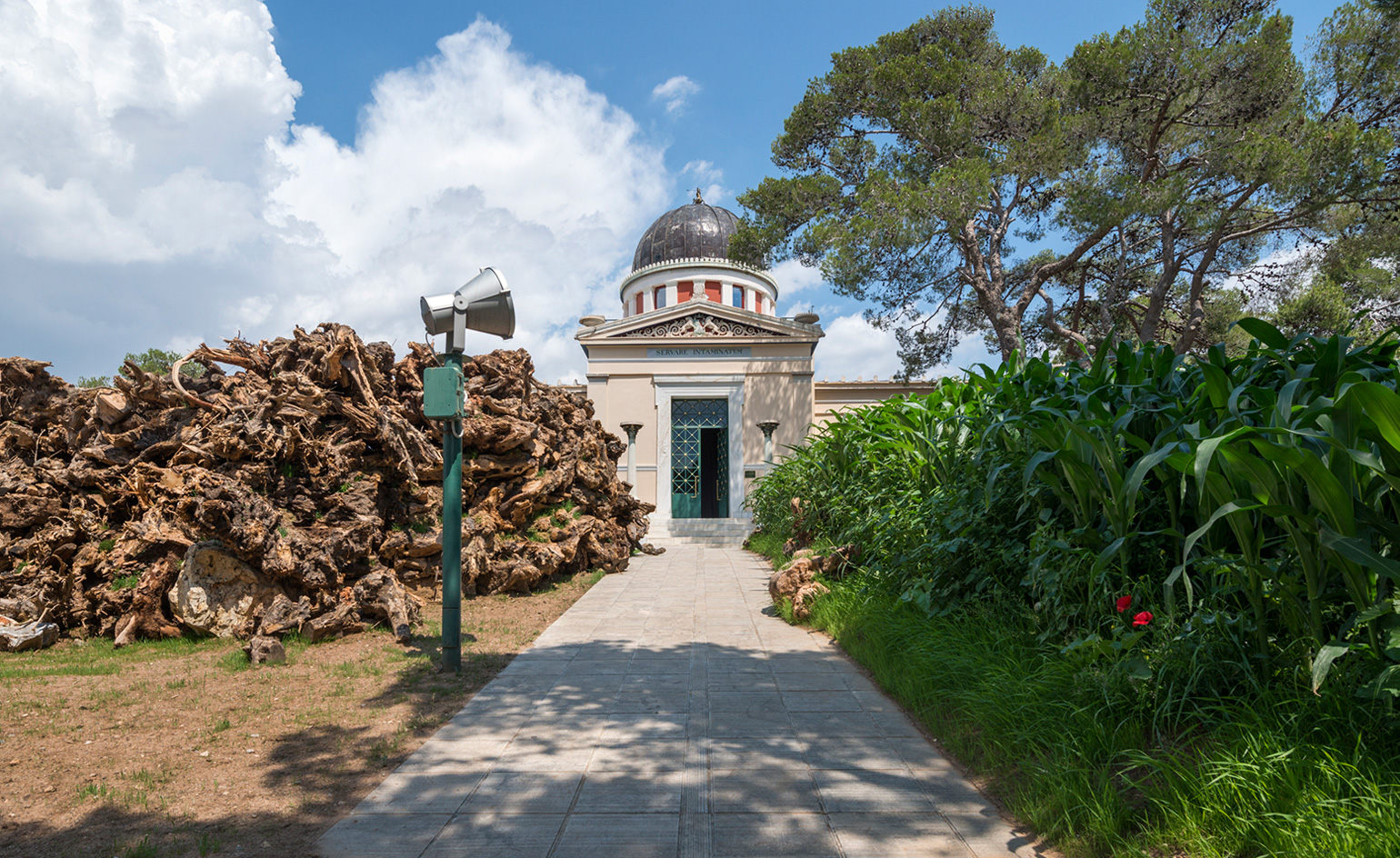
Stargazing requires looking upward, but Adrián Villar Rojas’ newest installation at the National Observatory of Athens draws attention back down to earth. Wandering through the latest edition of his series, ‘The Theater of Disappearance’, is a spiritual experience that bridges earth and sky, the past, future and present, internal and external worlds.
For the project, commissioned by the Greek contemporary art foundation NEON, the Argentinean artist has transformed the observatory museum and the nearby Hill of Nymphs. A Latin inscription on the Observatory declares that the place is ‘to remain as it is’, but Villar Rojas, known for his surreal sculptural interventions, disregards that command.
The artist has sowed a veritable jungle of 26 plant species, including corn, melons, artichokes, wild grasses and bamboo. The vegetation has taken over the hill, swallowing statues, and will continue growing wild until the show’s end in September.
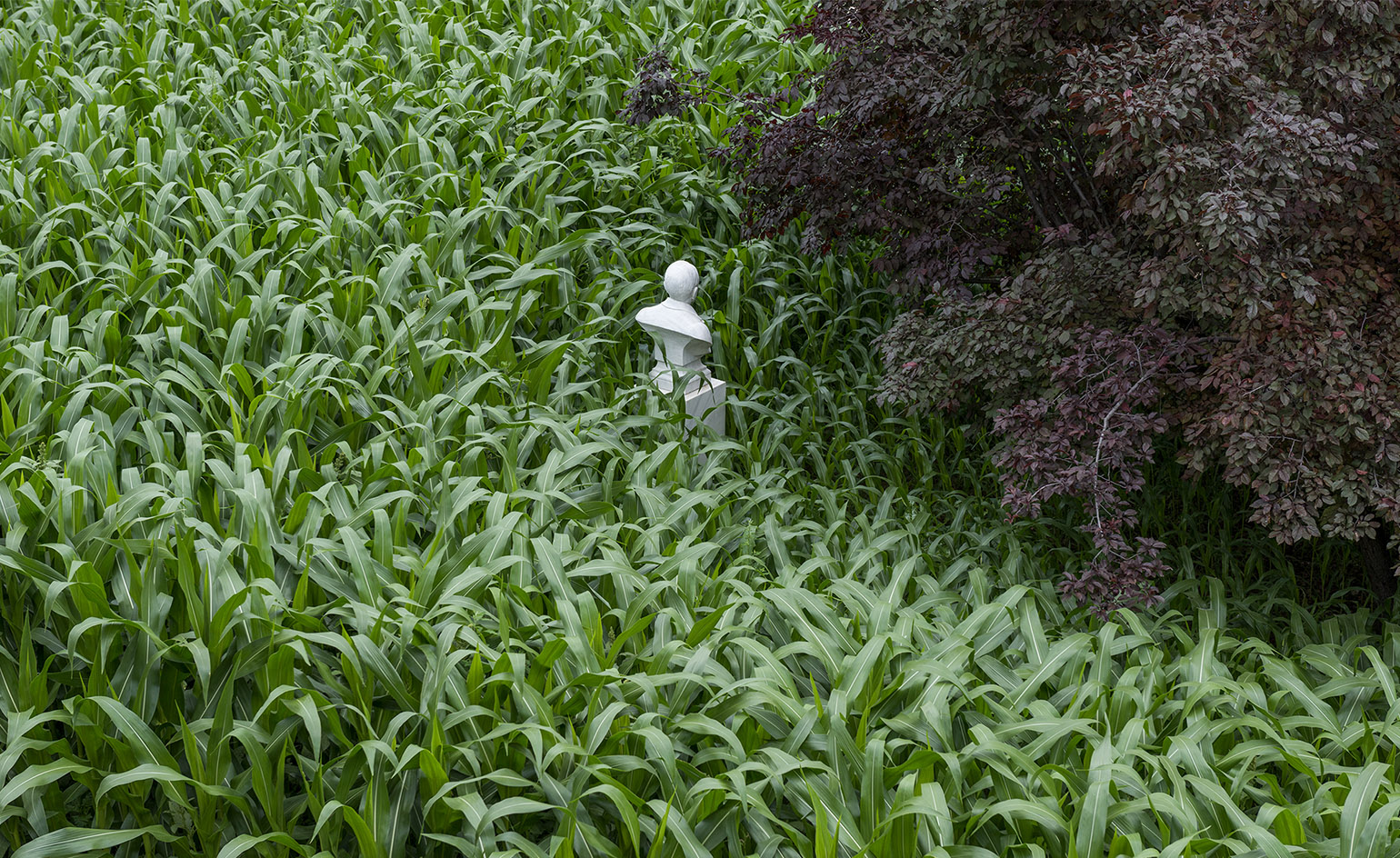
The Theater of Dissapearance, by Adrián Villar Rojas, 2017. Courtesy of NEON
Villar Rojas unifies the observatory with its hill, utilising an area usually ignored by staff and visitors. On one side of the hill, the path through the vegetation abruptly gives way to a loose dirt slope. Known as the ‘war zone’, the hillside and its caves – some challenging to reach – host 11 large vitrines.
In one, a graffitied Winged Victory of Samothrace lies on her side. Butterflies flit around a Mars rover (the Red Planet dirt juxtaposed with green trees seen through the vitrine). Some displays mix timeframes. One features an astronaut’s suit lying with a saber. Each presents a rearranged narrative of history, commenting on the violence of humankind’s drive for conquest. Finally, as though entering another dimension, the domed observatory becomes a temple; a sanctuary to contemplate the contrast of lush vegetation and the vitrines’ stark images.
Villar Rojas has removed almost everything from the museum, keeping a curated slew of noble objects such as handsome telescopes and old tomes. Wandering through the heavy curtains is meditative, while the ancient instruments quietly pull you in to peer into space’s unknowns.
Only the irrigation system Villar Rojas installed will remain after the project ends. Until then, the non-native plants will continue conquering the hillside, shrouding existing monuments, obscuring perspectives, and taking over a home that is not theirs. This is ‘The Theater of Disappearance’ after all.
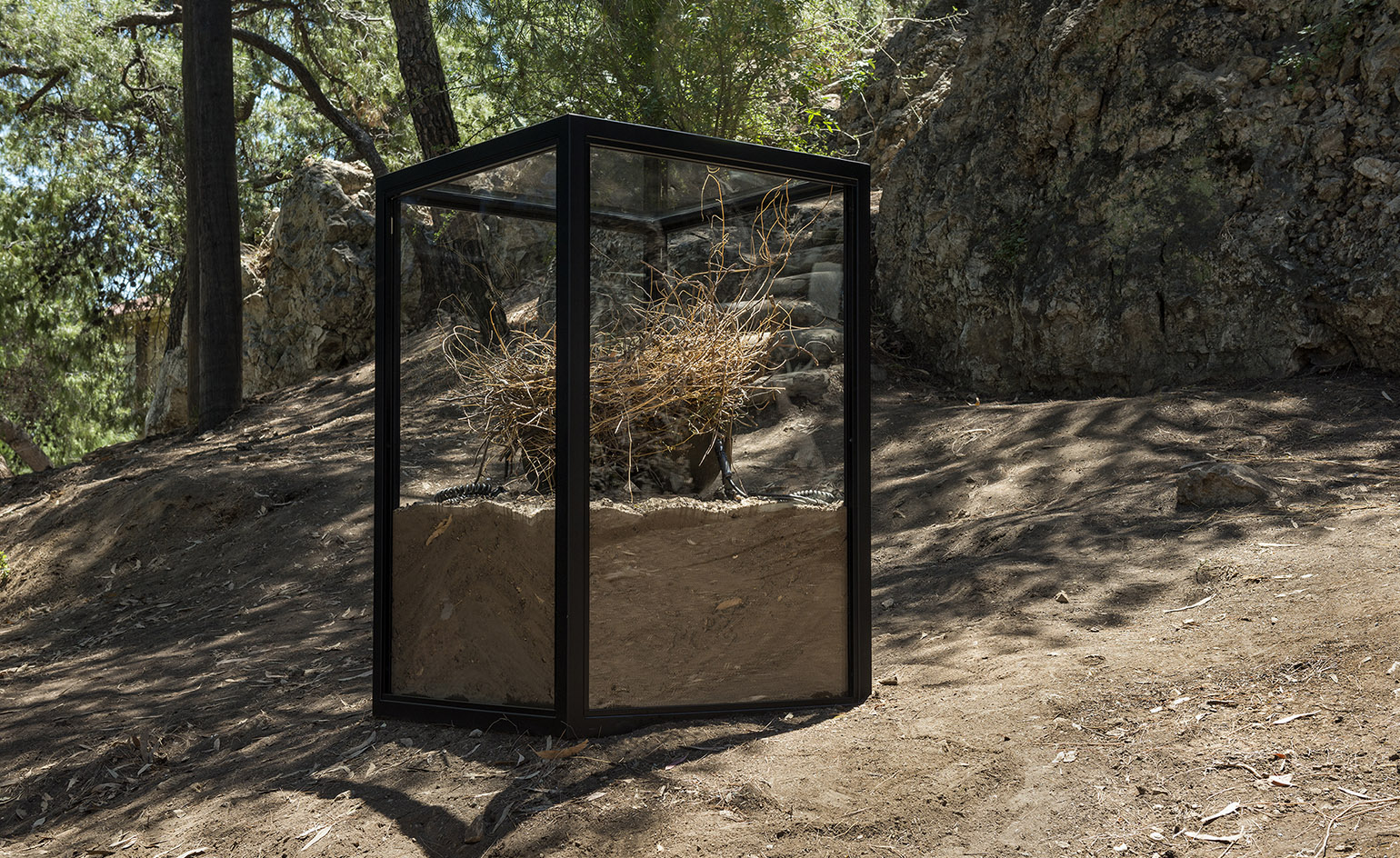
He has installed 11 large vitrines around the grounds

The installation sees Villar Rojas negotiate with an archaeological site for the first time

The vitrines mix timeframes, presenting a rearranged narrative of history
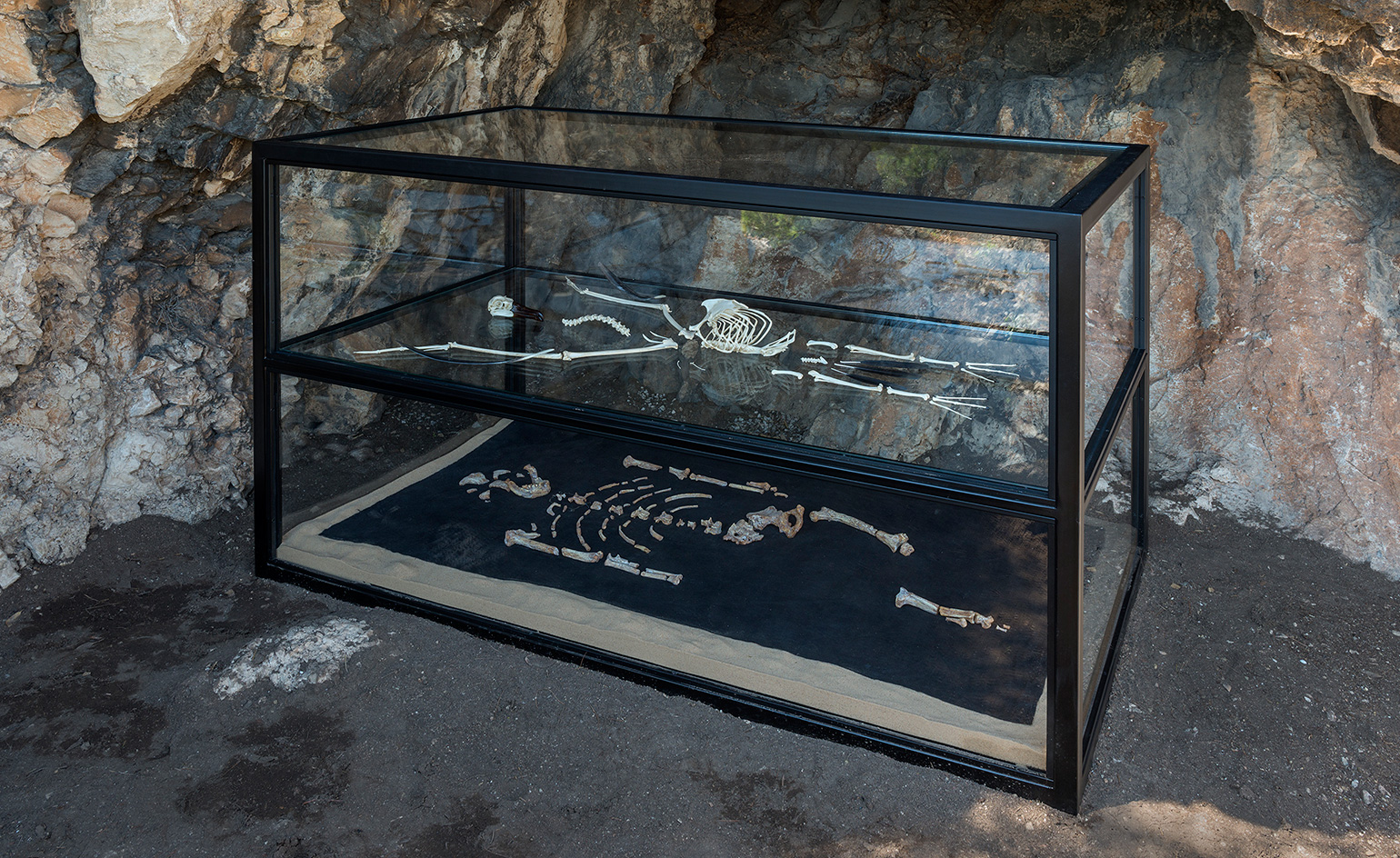
A replica of the famous fossilised bones of the 3.2 million-year-old Australopithecus known as Lucy is found in one glass case
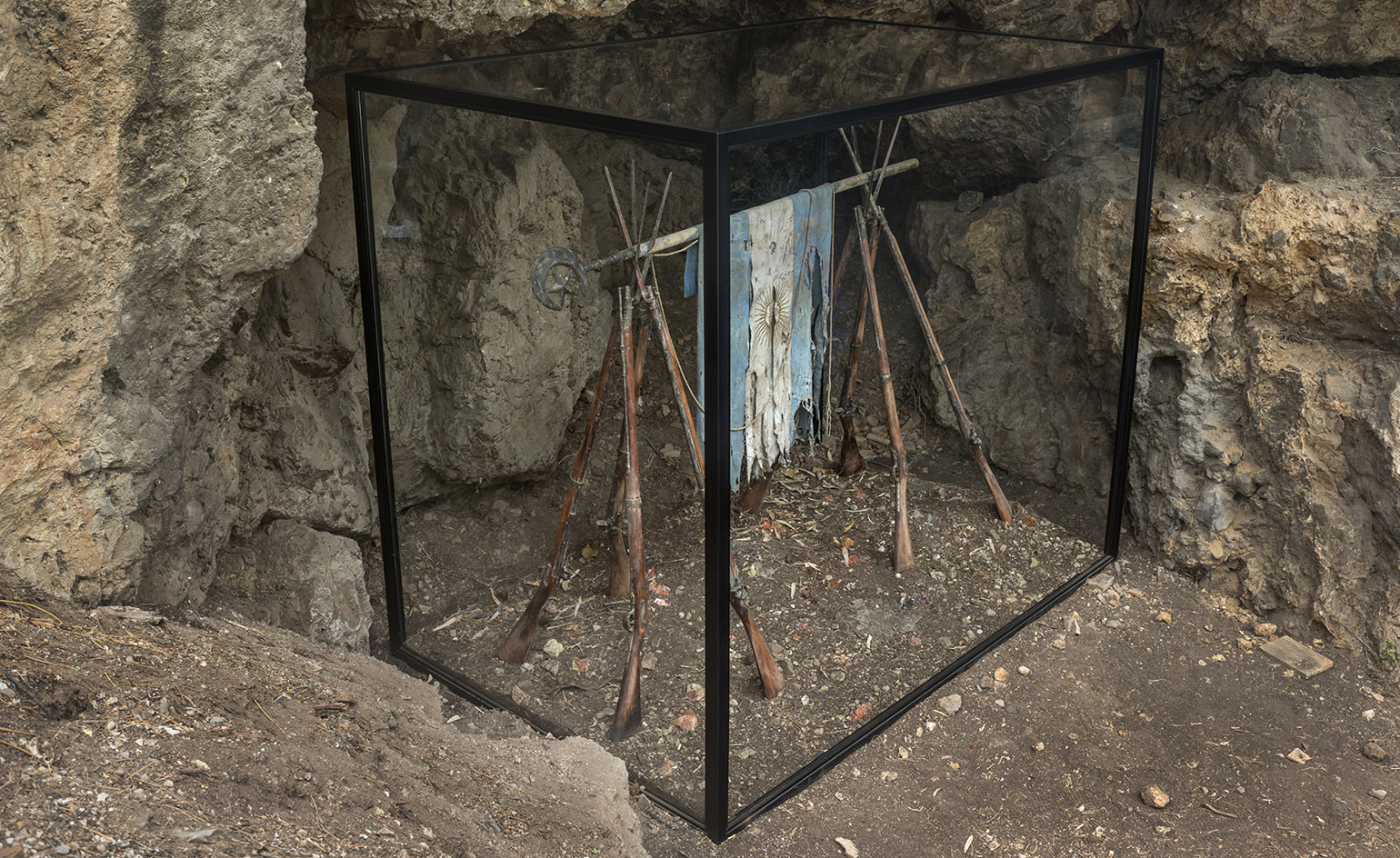
Each glass vitrine is exhibited on earthy slopes and in rocky caves
INFORMATION
‘The Theater of Disappearance’ is on view until 24 September. For more information, visit the NEON website
ADDRESS
National Observatory of Athens
Athens 11810
Receive our daily digest of inspiration, escapism and design stories from around the world direct to your inbox.
-
 The White House faced the wrecking ball. Are these federal buildings next?
The White House faced the wrecking ball. Are these federal buildings next?Architects and preservationists weigh in on five buildings to watch in 2026, from brutalist icons to the 'Sistine Chapel' of New Deal art
-
 Georgia Kemball's jewellery has Dover Street Market's stamp of approval: discover it here
Georgia Kemball's jewellery has Dover Street Market's stamp of approval: discover it hereSelf-taught jeweller Georgia Kemball is inspired by fairytales for her whimsical jewellery
-
 The best way to see Mount Fuji? Book a stay here
The best way to see Mount Fuji? Book a stay hereAt the western foothills of Mount Fuji, Gora Kadan’s second property translates imperial heritage into a deeply immersive, design-led retreat
-
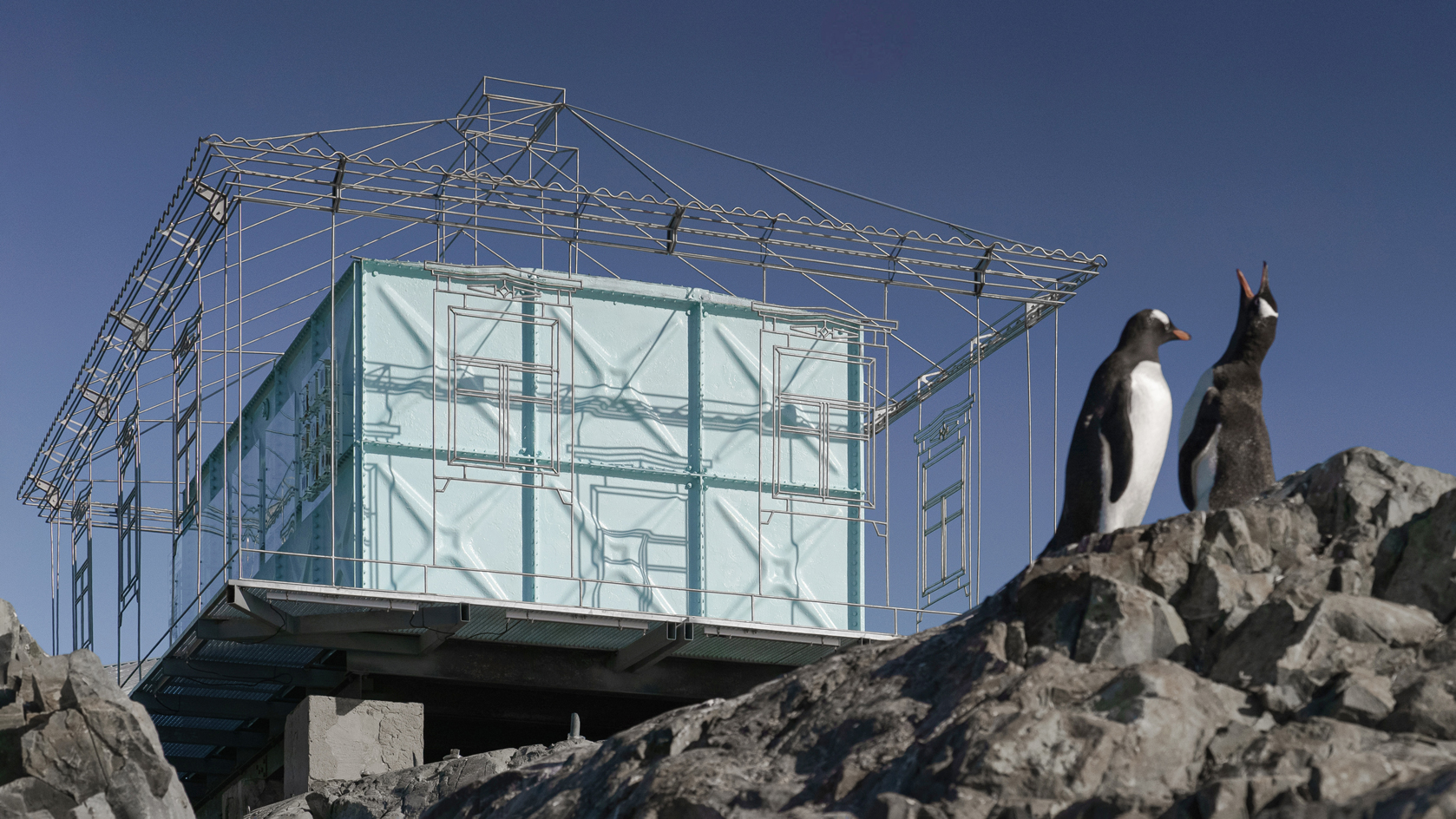 Remote Antarctica research base now houses a striking new art installation
Remote Antarctica research base now houses a striking new art installationIn Antarctica, Kyiv-based architecture studio Balbek Bureau has unveiled ‘Home. Memories’, a poignant art installation at the remote, penguin-inhabited Vernadsky Research Base
-
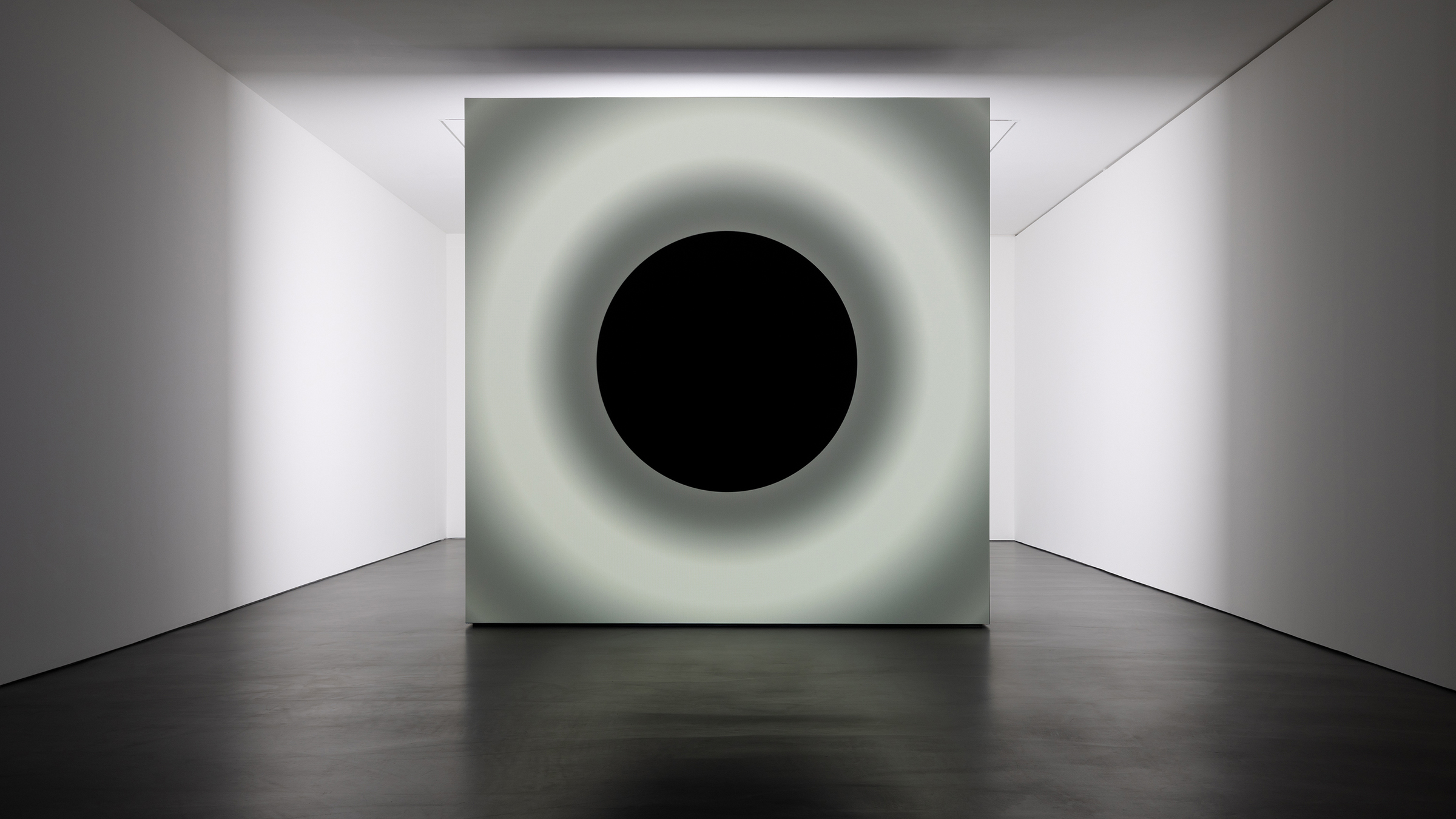 Ryoji Ikeda and Grönlund-Nisunen saturate Berlin gallery in sound, vision and visceral sensation
Ryoji Ikeda and Grönlund-Nisunen saturate Berlin gallery in sound, vision and visceral sensationAt Esther Schipper gallery Berlin, artists Ryoji Ikeda and Grönlund-Nisunen draw on the elemental forces of sound and light in a meditative and disorienting joint exhibition
-
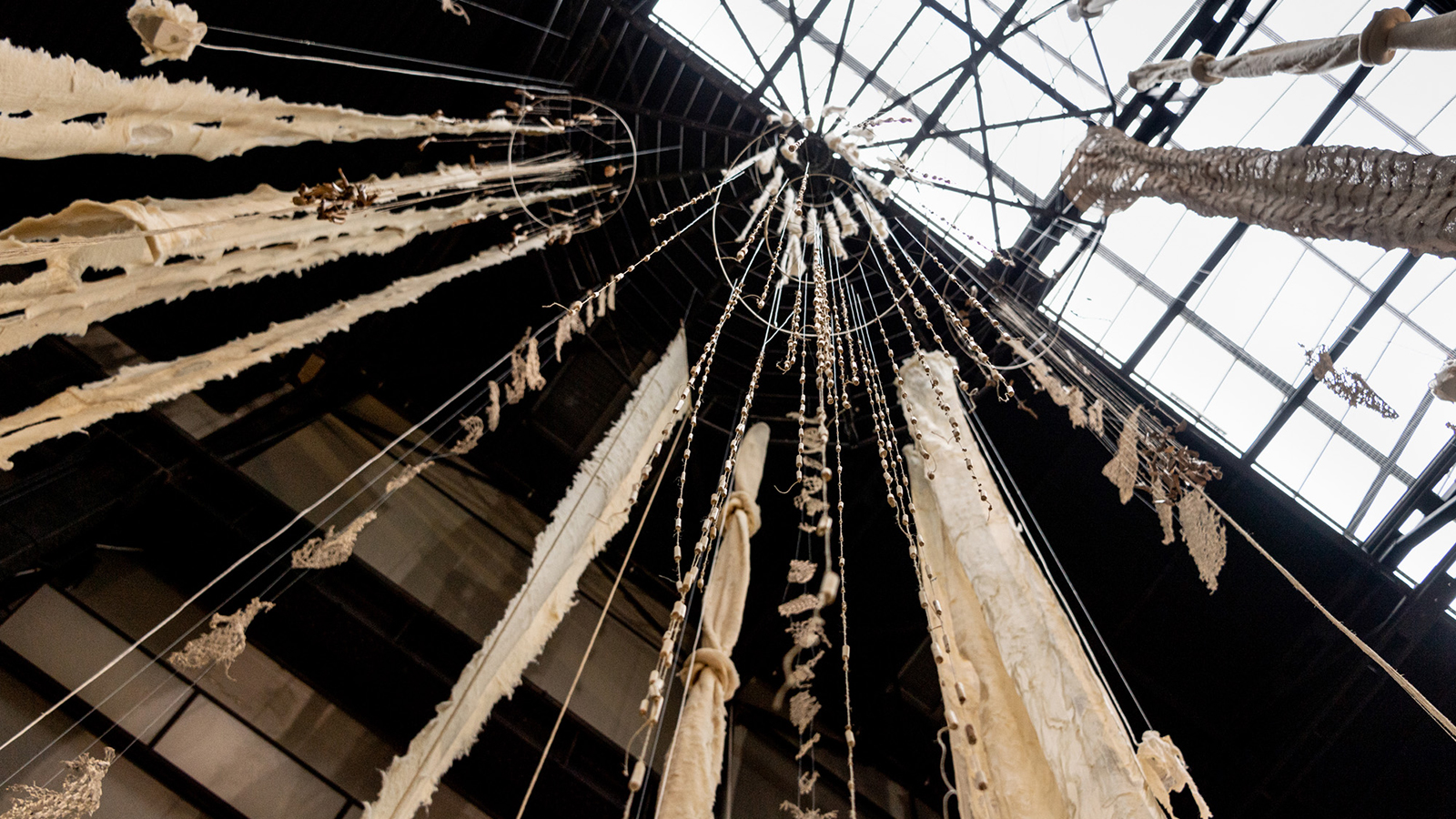 Cecilia Vicuña’s ‘Brain Forest Quipu’ wins Best Art Installation in the 2023 Wallpaper* Design Awards
Cecilia Vicuña’s ‘Brain Forest Quipu’ wins Best Art Installation in the 2023 Wallpaper* Design AwardsBrain Forest Quipu, Cecilia Vicuña's Hyundai Commission at Tate Modern, has been crowned 'Best Art Installation' in the 2023 Wallpaper* Design Awards
-
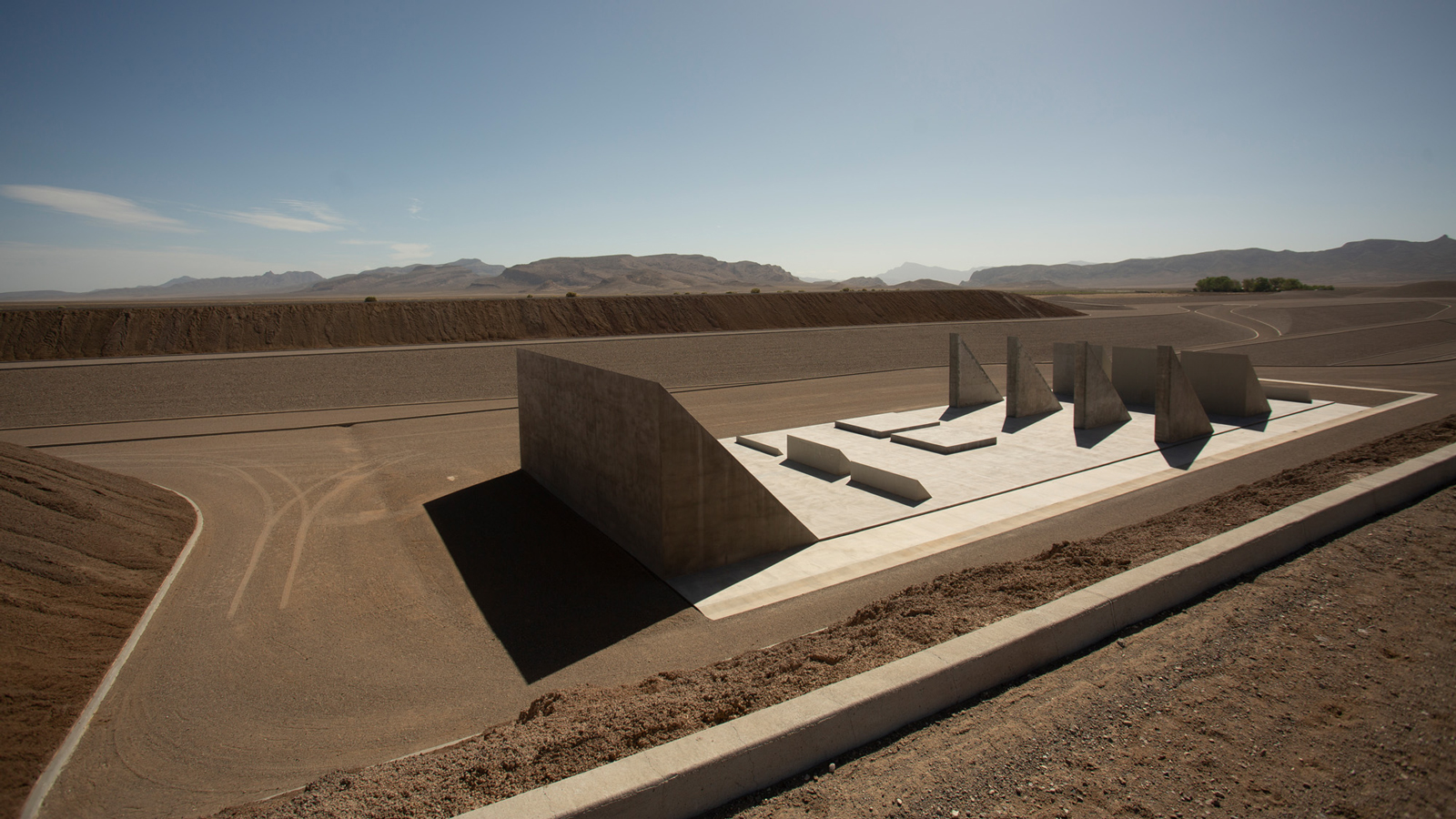 Michael Heizer’s Nevada ‘City’: the land art masterpiece that took 50 years to conceive
Michael Heizer’s Nevada ‘City’: the land art masterpiece that took 50 years to conceiveMichael Heizer’s City in the Nevada Desert (1972-2022) has been awarded ‘Best eighth wonder’ in the 2023 Wallpaper* design awards. We explore how this staggering example of land art came to be
-
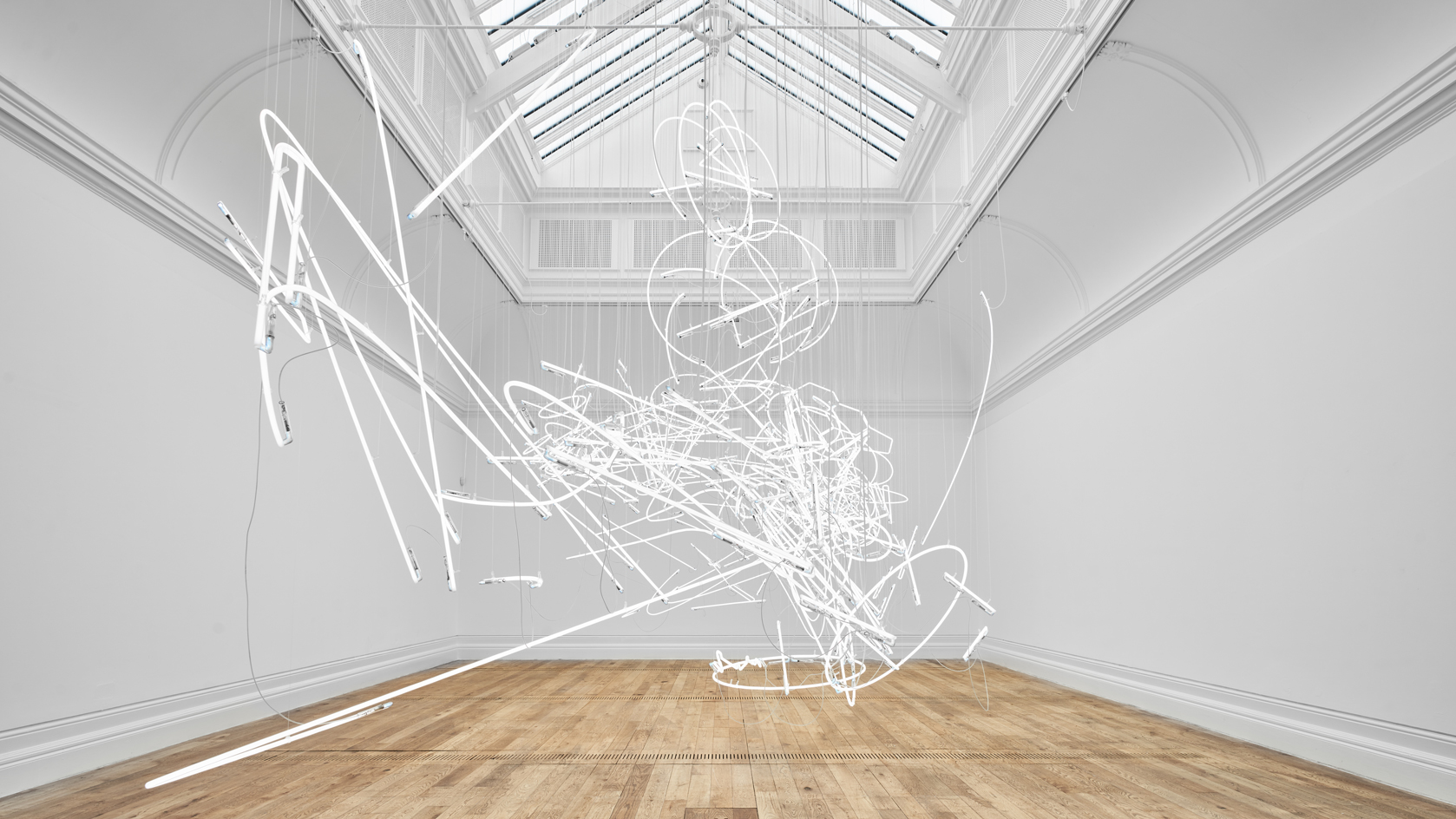 Cerith Wyn Evans: ‘I love nothing more than neon in direct sunlight. It’s heartbreakingly beautiful’
Cerith Wyn Evans: ‘I love nothing more than neon in direct sunlight. It’s heartbreakingly beautiful’Cerith Wyn Evans reflects on his largest show in the UK to date, at Mostyn, Wales – a multisensory, neon-charged fantasia of mind, body and language
-
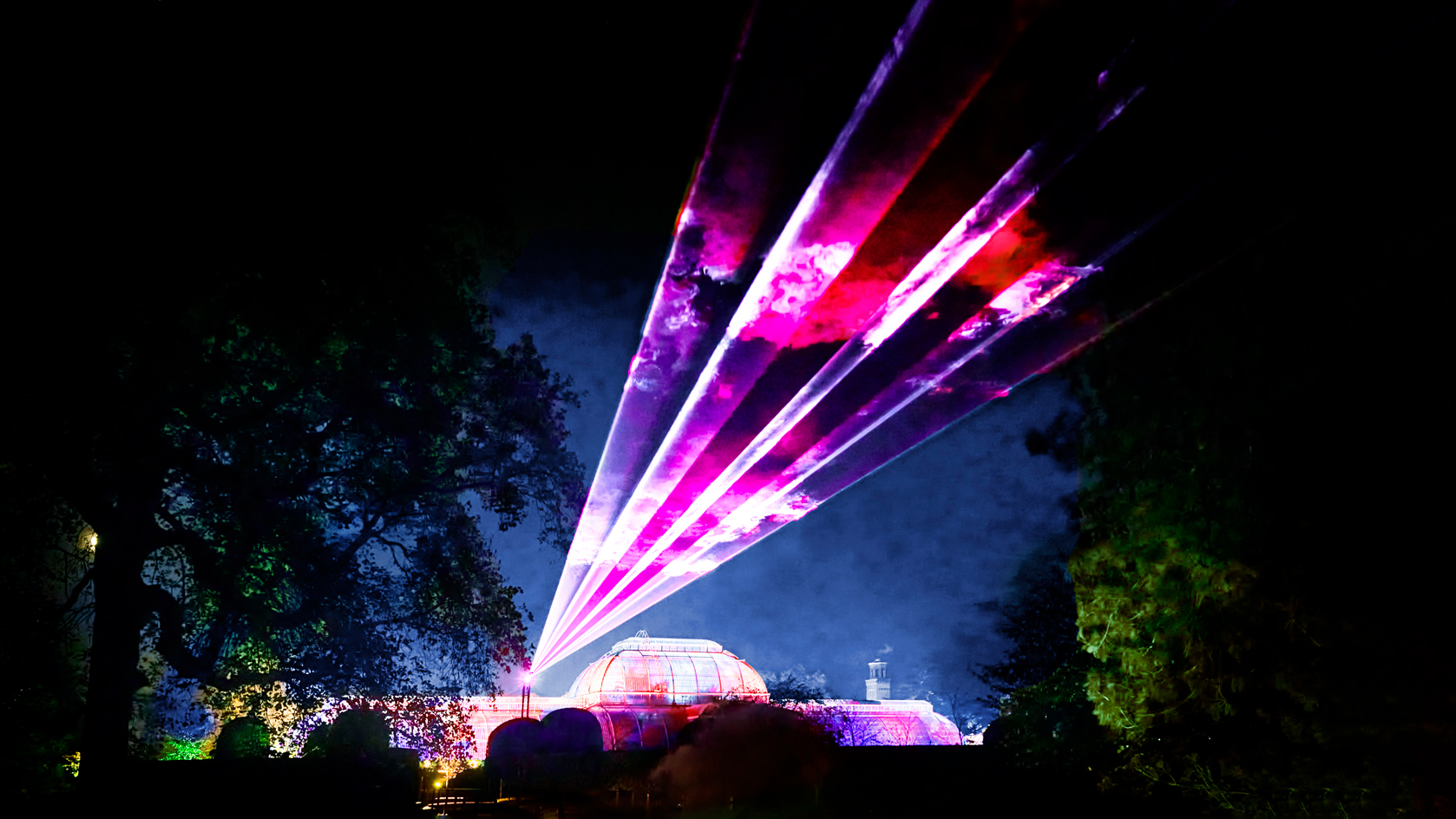 The best 7 Christmas installations in London for art lovers
The best 7 Christmas installations in London for art loversAs London decks its halls for the festive season, explore our pick of the best Christmas installations for the art-, design- and fashion-minded
-
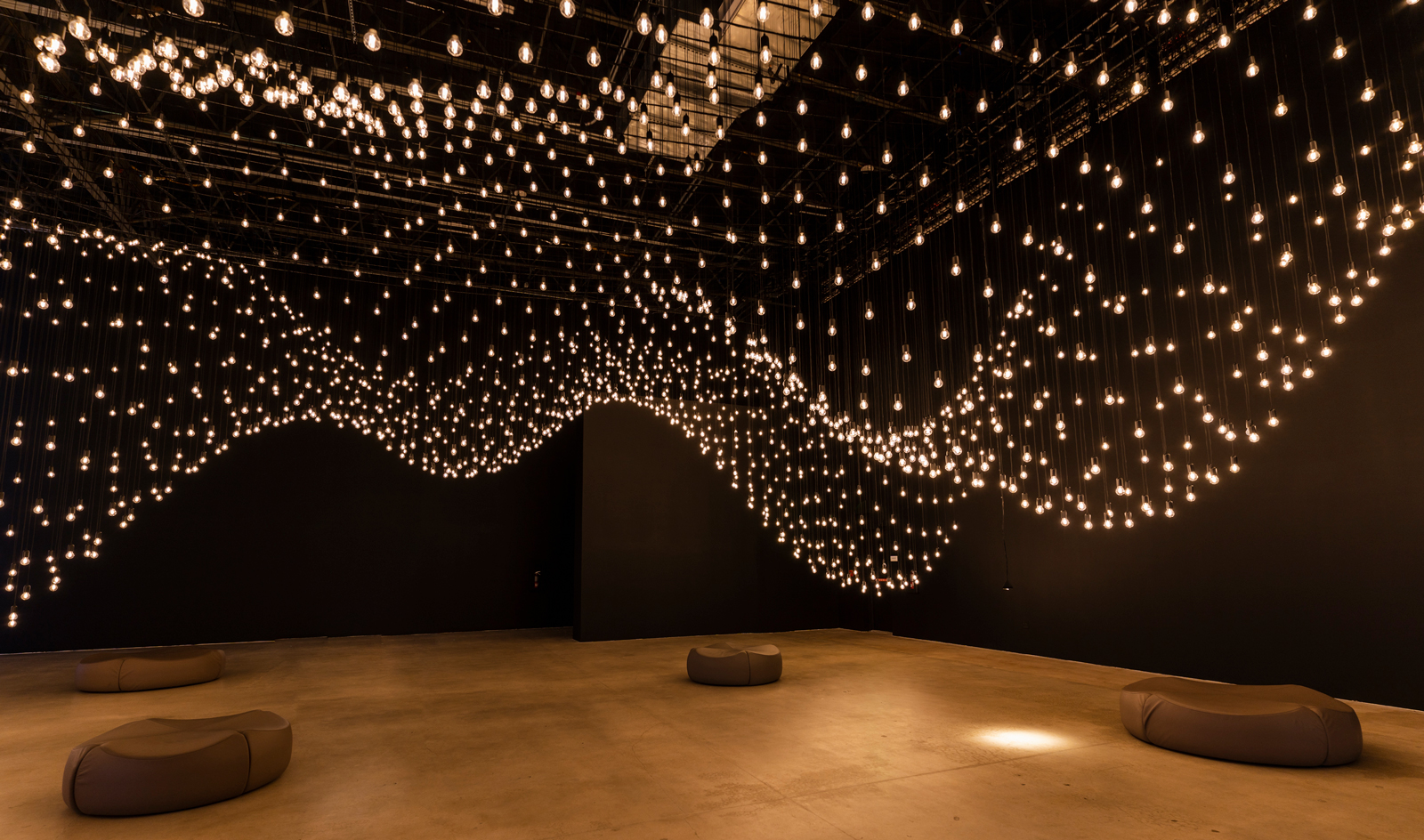 Rafael Lozano-Hemmer’s Pulse Topology in Miami is powered by heartbeats
Rafael Lozano-Hemmer’s Pulse Topology in Miami is powered by heartbeatsRafael Lozano-Hemmer brings heart and human connection to Miami Art Week 2022 with Pulse Topology, an interactive light installation at Superblue Miami in collaboration with BMW i
-
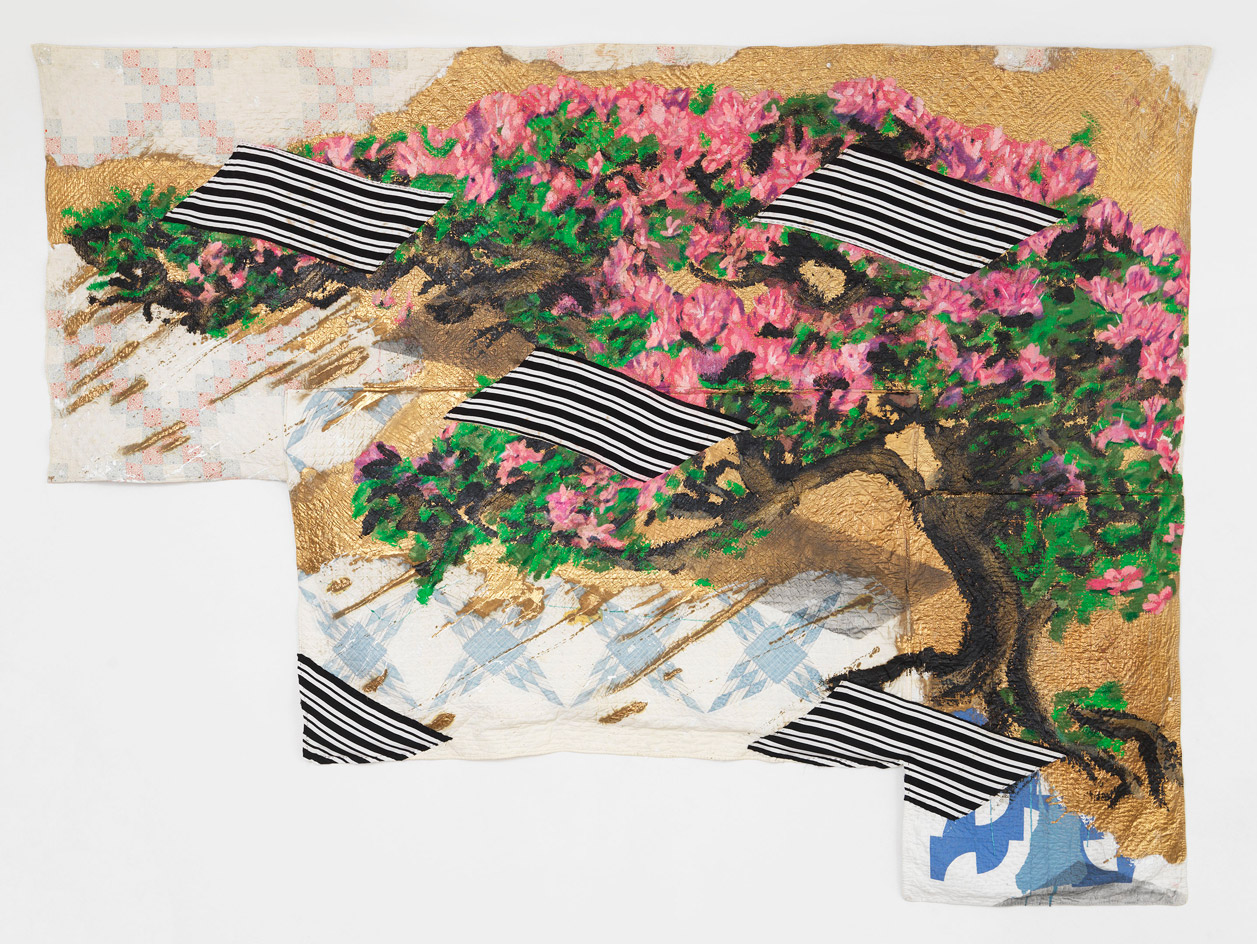 Textile artists: the pioneers of a new material world
Textile artists: the pioneers of a new material worldThese contemporary textile artists are weaving together the rich tapestry of fibre art in new ways